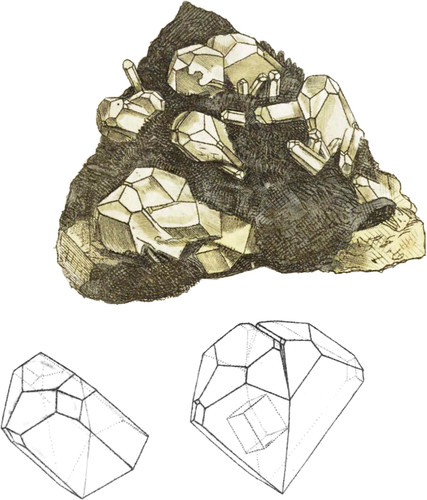 Enlarge
Enlarge
British Mineralogy
Carbonate of Lime
- Div. 1. Crystallized.
- Syn. Chaux carb. analogique. Haüy, 2. 252.
Common things are often esteemed by common persons because they look brilliant, and Quartz and Mundic have been thus vulgarly called Diamonds; and Diamonds in themselves of real value, in rude fragments, without a proper knowledge, might be cast away as rubbish. It is so lately that the instructive lessons of Nature have been consulted on the useful and elegant study of Mineralogy, that those who have taken advantage of this growing knowledge only know the benefit of it; they can appreciate what is to be esteemed valuable; they enjoy that eminence that sanctions a due value on what is most explanatory of true science.
The present specimen is very rare and valuable; it shows that the attraction that brings two crystals regularly together is confined to one particular side, and not disposed around the apex of the nucleus, as in the common Mackles; and it is new, as it is connected with the columnar modification; for we do not know that the columnar crystals of Carbonate of Lime have been mentioned as mackled in any publication before, except the Count de Bournon’s elaborate Treatise, plate 24, fig. 388.
Mr. Hewland, who possesses this crystal, sets an additional value upon it, as it was a favourite of his late uncle Mr. Forster, and was given him by the late Right Hon. Charles Greville, in whose collection is the only one known besides. It was an unfortunate jealousy in Romé de Lisle that hindered its being published long since in his work as an extraordinary production. I hope such pitiful jealousy will no longer be an obstacle to the elucidation of science.

